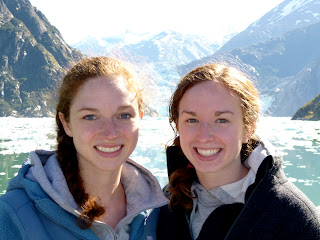About six weeks into my time at the Juneau
Public Health Center I was given the opportunity to go on a trip to Angoon, a
small native village of less than 400 people, with the itinerant nurse. The
trip was shorter than originally anticipated because the itinerant nurse was
moving to work in Anchorage and be an itinerant nurse for communities in the
Aleutian Islands. In Southeast Alaska, many of the communities are not
connected by roads so we took a float plane from Juneau to Angoon. Taking off
and landing on the water in a plane whose maximum capacity is 6 people was a
very different experience than the commercial flights I was used to and on the
way to Angoon we were able to see a humpback whale swimming below use.
Once
in Angoon we stopped at the SEARHC (Southeast Alaska Regional Health
Consortium) clinic and dropped off our things before going around to the
different schools on the island to follow up on students who needed
immunizations and ask what their health needs were to pass on the information
to the next itinerant nurse. That night we were invited over to dinner by one
of the women who worked at the health center and had “adopted” the itinerant
nurse into her family. For dinner we had Coho salmon eggs, seaweed and smoked
salmon so I had the opportunity to try traditional Alaskan foods.
The
next day we held a shot clinic to help children catch up on their immunizations
and receive their flu shots for the year before we flew back to Juneau. The
pictures below are: a view of the water and dock from my the room where I
stayed and a view of Angoon from the float plane on our way back to Juneau.



